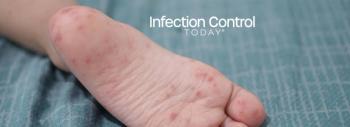
Germs in the Halls: Why Infection Preventionists Are Going Back to School

The pandemic opened unexpected doors for infection preventionists, pushing their expertise beyond hospital walls into schools and communities where stopping infections at the source matters more than ever.
(This is the second of 2 videos in a series. Find the first one
Infection prevention and control (IPC) has long been a cornerstone of hospitals and health care systems, but its reach is rapidly expanding. Over the past few years, infection preventionists (IPs) have increasingly stepped into schools, public health departments, and other community settings. This shift began in earnest during the COVID-19 crisis, which highlighted how quickly infections in classrooms ripple outward to impact families, workplaces, and entire health systems. As a result, organizations are beginning to see the value of having infection prevention expertise not only in hospitals but embedded directly within communities.
One promising area is the school environment. When children bring home viruses, parents may miss work, and local health care facilities feel the strain of increased cases. By focusing on prevention measures in schools—like improved hand hygiene, surface disinfection, and respiratory etiquette—IPC professionals can help reduce these downstream impacts. More schools are now exploring ways to leverage infection prevention resources, whether through direct hiring, consulting arrangements, or educational partnerships.
To learn more, Carole W. Kamangu, MPH, RN, CIC, a contributing editor for Infection Control Today® (ICT®), interviewed Jordan Bastian, MPH, CIC, an infection prevention consultant at MK Infection Solutions. This took place at the Association for Professionals in Infection Control and Epidemiology (APIC) Annual Conference and Expo in Phoenix, Arizona, from June 16 to 18, 2025, where he discussed his presentation on this subject.
Health departments also play a key role by supplying local data on disease trends, allowing schools to plan ahead for spikes in illnesses like influenza, respiratory syncytial virus (RSV), or even measles. Armed with this information, schools can reinforce hygiene campaigns, stock up on sanitizer and disinfectants, and adjust cleaning protocols as needed. National organizations such as APIC have also stepped in, offering toolkits specifically designed for schools. These resources include e-learning modules for staff ranging from bus drivers to nurses, customizable policies, and ready-made posters to promote best practices.
“IPs are a great resource that I don't think are tapped into from us, from a school side, and I think it could be beneficial to hire an IP, or maybe just even ask an IP to come do some education,” Bastian told ICT. “Maybe you want someone, to come into the classroom and teach about hand hygiene. Who knows better than IPs? It's also working with the administration, teaching them about the cause of illness, that germ, infection, prevention cycle, breaking that chain of infection. Some of the things that I don't think are widely understood, IPs can bring value in that and helping them understand and being a really good resource.”
Ultimately, as IPs branch out into these nontraditional settings, adaptability becomes critical. The science behind infection control continues to evolve, and IPC professionals must stay flexible to apply new evidence effectively. By building bridges with schools and public health, they are helping to create a more resilient community infrastructure—one that catches infections early and keeps both classrooms and hospitals safer. This broader focus ensures infection prevention efforts truly start where people live, learn, and gather, not just where they go when they are already sick.
Newsletter
Stay prepared and protected with Infection Control Today's newsletter, delivering essential updates, best practices, and expert insights for infection preventionists.






